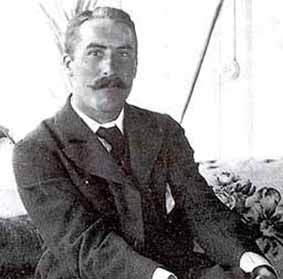Egypt went threw many great pharaohs, however one of the greatest was Ramses II. He was thought to be so great that he was often called "Ramses the Great". He expanded Egypt a great deal and built many amazing structures. He had an interesting life and I believe it's worth telling.
Ramses II was the son of Seti I and Queen Tuya. When he was younger he worked as co-ruler beside his father. This enabled him to have experience before he excepted the title of pharaoh. Soon after his father died, in 1290 B.C., Ramses II became pharaoh. He then ruled as the third king of the 19th dynasty. His mother, Tuya went down from the title of Queen to the King;s mother, which acted as his adviser. His first act was to wage war on Syrai, later known as the Battle of Kadesh. This battle would indicate who had control over Syria. Ramses II lead his army of 20,000 to war, all while trying to maintain his empire against the Hittites. In spite of this his tactics were not well planned, therefore he was forced to retreat. This did not slow him down thou, he moved on and started building his empire up through architecture.

After this first battle all stood at a stand still for some time, but there was then a
treaty signed that divided the land and stated that Ramses II would marry the daughter of the Hittites king. Later in his reign Ramses II attacked many of his enemies such as the Libyans and the Nubians and also attacked Syria about half a dozen times.
Ramses II had
eight royal wives. These eight wives were Nefertari, Istnofret, Bint-Anath, Meryetamun, Nebettawy, Henutmire, Maathorneferure, Name Unknown. He had many other wives, but these were his eight principle wives. Nefertari, however, was his first and favorite wife.
Ramses II
accomplished many things in his reign. One of his major ones was he became one of the famous Egyptian pharaohs known for his military strength. He gained back much of the territory that was lost during another pharaohs reign. Another of Ramses II's great accomplishments is he built more monuments than any of the other ancient Egyptian pharaohs. The Ramses II monument at Abu Simbel is the most famous of all. He did this because of his great love for architecture. These are a few of Ramses II's great accomplishments during his reign.

Ramses II
lived to be an astonishing ninety-two. Outgrowing some of his children, Ramses II lived almost double the live expectancy back then. Some of the medical problems that studies have found were problems with his heart and hip, and he had a broken nose. This was unusual for a pharaoh to have. Even thou he lived a extremely long life, all must die.

Ramses II's tomb is located in the Valley of the Kings, and remains empty. After being looted by tomb robbers for years, the tomb is now being restored. Even thou the tomb is empty the mummy of Ramses II has been found, and is thought to be the one of the best preserved mummies ever discovered. (Valikovsky 203)
After Ramses II's death there was many confusion about who would be the next Pharaoh, however, with so many sons there was much fighting. For a few years they fought for the throne. Most of their reigns were brief and did not do much for Egypt. When Ramses II died Egypt entered a decline, that it would never fulling recover from. (Lassieur 75)
Ramses II lived a long life and accomplished many things during his reign. He even brought Egypt to one of its highest points in history. To this day Ramses II is remembered as a great man who changed Egypt forever.
Lassieur, Allison. The Ancient Egyptians, Lucent Books, Inc.; San Diego, 2001.
Velikovsky, Immanuel. Ramses II and His Time, Doubleday & Company, Inc.; New York, 1978.








 ~ Akhenaten, Nefertiti, and their childeren worshiping Aten . ~
~ Akhenaten, Nefertiti, and their childeren worshiping Aten . ~ ~~~~~~~~~~~~~~~~~~~~~Kiya~~~~~~~~~~~~~~~~~~~~~~
~~~~~~~~~~~~~~~~~~~~~Kiya~~~~~~~~~~~~~~~~~~~~~~